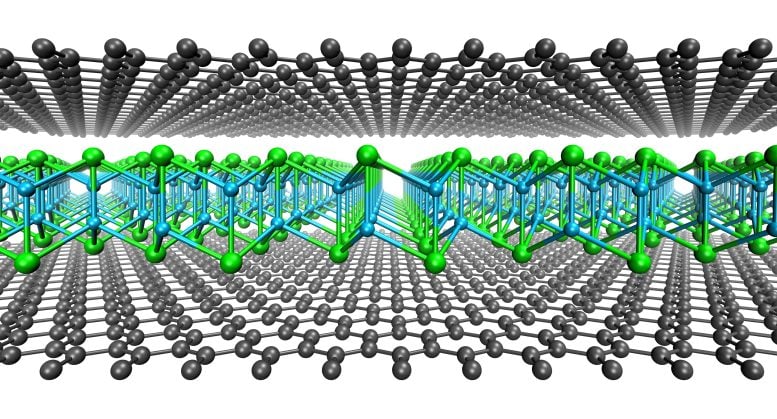
The design of new materials allows for either improved efficiency of known applications or totally new applications that were out of reach with the previously existing materials. Indeed, tens of thousands of conventional materials such as metals and their alloys have been identified over the last hundred years. A similar number of possible 2D materials have been predicted to exist, but as of now, only a fraction of them have been produced in experiments. One reason for this is the instability of many of these materials in laboratory conditions.
In the recent study, the researchers synthesized 2D cuprous iodide that was stabilized in a

A single layer of cuprous iodide encapsulated in between two sheets of graphene (gray atoms). Credit: © 2021 Kimmo Mustonen, Christoph Hofer und Viera Skákalov
“As so often, when we first saw the new material in our microscopy images, it was a surprise,” says Kimmo Mustonen, the lead author of the study. “It took us quite some time to figure out what the structure precisely was. This enabled us together with Danubia NanoTech company, headed by Viera Skákalová, to design a chemical process for producing it in large scale”, he continues. Understanding the structure was a joint effort of scientists from the Universities of Vienna, Tübingen, Antwerp and CY Cergy Paris. “We had to use several electron microscopy techniques to make sure that we were really seeing a monolayer of copper and iodine and to extract the exact